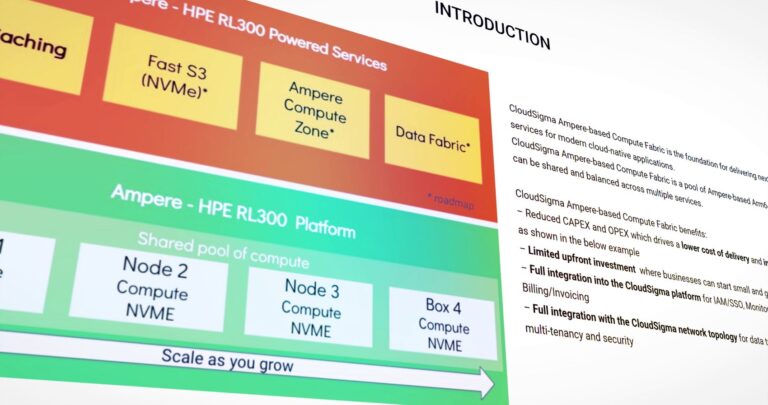IT support staff are poised for another major role re-configuration.
In recent years, most faced the challenge of adapting to a new set of remote requirements, including mastering effective methods of diagnosing and solving complex issues at a distance. But, now that hybrid systems and practices are finally running (relatively) smoothly, increasing adoption of AI is set to change the shape of technical support once again.
The good news is that greater AI adoption doesn’t necessarily equate to human replacement. As highlighted by researchers at Gartner, even the smartest solutions are not able to replicate the knowledge and abilities of human specialists. So, AI-infused ways of working should be about co-pilot enabled efficiency, rather than a switch to autopilot. But, at the same time, greater implementation will bring changes for teams.
To seize the productivity-boosting potential of advanced tech, IT leaders must improve their understanding of what practical use looks like and how tools can be deployed to ensure the right balance of automated efficiency and human-led support.
Why does IT need AI?
AI isn’t just a nice-to-have for businesses keen to get ahead of the emerging tech curve. It’s becoming an essential means of addressing two persistent IT support challenges: bridging the skills gap and keeping up with rapid tech development.
Although budget restrictions have started to lift for IT chiefs, an ongoing lack of expert talent means resources remain strained, with global CIOs spending more on fewer hires while the UK tech recruitment space remains competitive and notably low on support skills. As a result, already overstretched teams are under increasing pressure to meet high service level agreement targets, further streamline their efficiency, and meet ever-changing user needs.
Adding an extra layer of convolution is the growing complexity of internal systems. Following the pandemic drive to build flexible infrastructure and service setups, continuous digital progress has brought a constant flurry of new tools, software, and practices that are giving nine out of ten business directors “bytemares” and making IT support jobs harder.
By enabling automation of routine tasks and providing additional smart assistance, IT leaders can considerably lighten the load of everyday support – allowing teams to cover more ground without spreading themselves too thin.
The tech effect: augmentation in action
The key to effective AI implementation is focusing on tasks that machines can complete with greater speed and efficacy than humans, as well as a strong level of accuracy — A.K.A what Deloitte has termed the “sweet spot” for automation using tech such as generative AI. For a clearer idea of what exactly that will mean, let’s explore a couple of real-world use cases:
- Reinforcing frontline service
Arguably the greatest flaw of standard helpdesk procedures is how quickly they tend to clog, particularly for smaller teams. As agent capacity maxes out and ticket volumes grow, so does the bottleneck of users left waiting. Introducing a first-level of AI troubleshooting to service portals can vastly reduce the frustration such delays cause, on top of curbing lost productivity by directly addressing more straightforward issues.
For example, say a business user is unable to send emails on their computer. Once they have submitted their ticket, AI tech assesses the problem using natural language processing, searches the company’s knowledge hub for relevant advice, and outputs self-service tips that allow the user to fix the problem independently. The user can get back to work quicker, while service teams are freed up to concentrate their energy and expertise on tackling more complex issues.
- Elevating agent abilities
From the agent’s perspective, AI assistants have huge potential to act as valuable service partners. Using multi-functional internal interfaces, teams can outline their requirements in simple prompts and get instant support with defining which service direction they should take for live issues or streamlining everyday tasks.
For example, a trainee agent might use a simple prompt, such as “what’s slowing down this device?”, to cut time spent on hunting for issues. Meanwhile, seasoned staff can win back vital headspace by instructing AI assistants to produce a script for automatically executing what they want to achieve – from individual software updates to scaled patches.
Meeting responsible provisos
Unsurprisingly, there are some caveats IT leaders must navigate to ensure intelligent support works for agents and upholds strong service standards. For instance, robust system training is essential from a technical standpoint to maximise precision and minimise risk, with every AI response and suggestion checked — and, if necessary, corrected — by humans. Although such processes will add to technician workloads in the short term, this early groundwork is critical to put machine learning on the best path to offer consistently reliable assistance.
Another closely related consideration is the fact tools can’t drive positive outcomes if teams don’t know how to use them. According to research from the Boston Consulting Group, only 21% of frontline UK workers feel they have received enough AI skills development and, correspondingly, regional confidence in wielding AI ranks among the lowest globally.
As a result, it’s equally important to prioritise training that better equips human workers for smooth and self-assured co-piloting. Alongside clear communication of the rationale behind AI adoption and benefits employees can expect, training should also include detailed practical guidance on how employees can harness it to improve their own performance, as well as user satisfaction.
AI isn’t a blanket solution for all IT challenges, but it can go a long way towards shouldering the ever-growing burden on support agents. In the not-so-far-off future, companies boasting the highest customer satisfaction and best service scores will be those that understand the role tech plays in amplifying human capacity when used well. Or put another way: using smart innovation to apply controlled automation will help human teams stay in the driving seat and allow them to do more with less.
About The Author
Anand Rajaram is VP of Product at GoTo. At GoTo, we’re making IT easy, anywhere, with remote management and support, and business communication software, unified with one admin solution. We help you get things done simply and securely, so work time can be well-spent and free time can be better spent. GoTo’s portfolio, which includes GoTo Resolve, Rescue, GoTo Connect, and more, helps securely support and connect businesses to what’s most important: their teams and customers.
Featured image: Adobe


